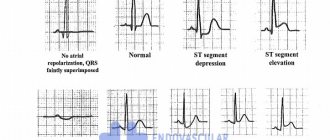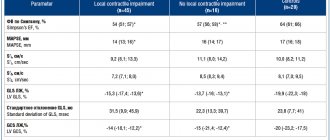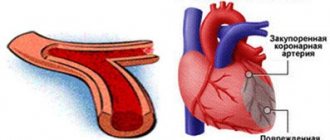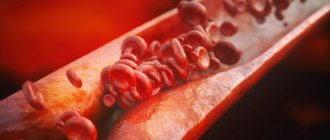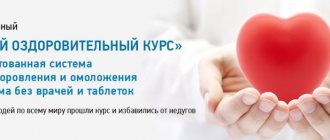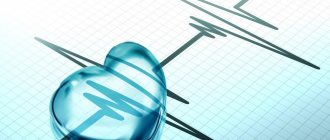13 minutes
“Currently, about 30% of people (28% men and 34% women) aged 15 years and over in the world were not physically active enough. Approximately 3.2 million annual deaths are associated with insufficient physical activity" (World Health Organization)
Myocardial infarction is necrosis (death) of the heart muscle (myocardium), which occurs due to acute insufficiency of coronary blood flow.
Read more about myocardial infarction, risk factors for its development and rehabilitation here: “Rehabilitation after myocardial infarction”
Physiotherapy exercises for myocardial infarction begin on the 2nd or 3rd day. First, exercises that are feasible for the patient are carried out, ensuring mobility in small and medium-sized joints, then the exercises become more complicated.
Wider use of physiotherapeutic rehabilitation begins from the 30-45th day from the onset of acute myocardial infarction in rehabilitation departments, sanatoriums or clinics. During this period, a set of measures is used, including strictly dosed walking, therapeutic exercises, and physiotherapeutic procedures.
Recommendations for physical activity, types of exercises and their duration are developed by the doctor, based on the age, weight of the patient who has suffered a myocardial infarction, the severity of damage to the heart muscle according to clinical, biochemical and electrocardiographic indicators, and the presence of concomitant diseases.
The Cardiological Sanatorium operates a medical program “Recovery”, within the framework of which the rehabilitation of patients who have suffered a myocardial infarction is carried out.
Breathing exercises
In diseases of the cardiovascular system, breathing exercises play a special role. In terms of their physiological effects on the body and the cardiovascular system, they differ significantly from all other types of exercise and from any physical activity. If most exercises stimulate the cardiovascular and nervous systems to one degree or another, increasing the number of heart contractions, then breathing exercises, on the contrary, help calm cardiac and nervous activity and reduce shortness of breath.
You must carefully monitor deep and rhythmic breathing during exercise and alternate active physical exercises with special breathing exercises. Therefore, you should pay attention to correct, full (thoracic and abdominal), deep nasal breathing.
Exercises to develop nasal breathing:
- lightly stroke the nose from bottom to top, around the eyes and again to the bottom of the nose;
- tap your middle finger like a hammer on your nose, breathing freely;
- wrinkle your nose, fold it up;
- inflate the wings of the nose, then squeeze them, exhale;
- tap your nostrils with your middle fingers and exhale completely, lightly stroke your nose upward - inhale;
- kneading the base of the nose from the sides with rotational movements with your middle fingers, exhale completely, stroking your nose upward - inhale;
- tap your fingers on the right and left of the nose, then on the forehead and cheeks near the nose;
- rub the septum under your nose with your index finger, slightly lifting the tip of your nose;
- close the left nostril and exhale and inhale with the right, then the same with the left;
- sing a melody with your mouth closed to the sound “m”.
Repeat each of these techniques 7-8 times.
Do not hold your breath while performing breathing exercises. Often, holding your breath is accompanied by muscular effort and is called “straining.” If you hold your breath during physical activity, the face becomes purple, the peripheral veins and vessels of the eyeball fill with blood.
Physiotherapy
During the recovery period after myocardial infarction, physical therapy exercises are recommended. To speed up the rehabilitation process, it is important to start aerobic (which enriches the blood with oxygen) physical activity for 20 minutes.
Before starting physical exercise, you should consult a doctor. Self-study after a myocardial infarction should be started only within the time frame and volume specified by the doctor. In this case, exercises must be selected strictly individually and carried out under the guidance of an experienced specialist.
During the first few days, it is very important that the patient be monitored by the attending physician during exercise, monitoring his pulse, blood pressure and, if possible, recording an ECG.
In the future, if twenty minutes of physical activity is well tolerated and after consultation with a doctor, the patient can increase its duration to 30 minutes a day.
To calculate the target heart rate during exercise, there is a special formula: from the number 220 you need to subtract the patient’s age and calculate 70% of this number. For example, if the patient is 53 years old, 220 - 53 = 167. 70% of 167 = 117.
Therefore, to get the maximum benefit from exercise, a fifty-three-year-old patient should maintain his heart rate at 117 beats per minute for 30 minutes. And at the same time he should feel comfortable, and he should not have any cardiac complaints.
When to start classes
The time when the patient should begin physical therapy is determined by the doctor. In his decision, he relies on the following factors:
- The severity of the patient's condition;
- Patient's age;
- Gender;
- Features of the course of the disease;
- Degree of physical fitness.
Note!
3-4 days after the attack, any physical activity is prohibited!
After the fourth day of rehabilitation, the doctor consults with the patient, assesses his condition and makes a decision on prescribing a complex of therapeutic exercises. At the initial stage, recovery is carried out while the patient is still in a supine position.
The timing of active exercise depends on how many times a person has had a myocardial infarction. If an attack occurs for the first time, active training begins within a month. After a second heart attack, classes are resumed only 5 weeks after the attack.
Walking
Therapeutic walking is dosed according to pulse, ECG dynamics, blood pressure and subjective data. Walking should not cause angina pectoris or other manifestations of coronary insufficiency (fatigue, significant decrease or increase in blood pressure, ECG changes).
The pace and duration of walking are purely individual, so they are set for each patient, taking into account his functional capabilities.
Before walking outdoors, for 4-6 days you should take short walks around the room and sit in the open air (on the balcony, veranda).
In the future, each time before walking, rest for 20-30 minutes, sitting outside. Walk rhythmically, at first no more than 50-60 steps per minute, without changing the pace, especially towards acceleration. It is not recommended to talk while walking.
Start walking and climbing stairs no earlier than an hour and a half after meals and end no later than an hour before meals.
Depending on how you feel, walking and stair climbing can be done up to 2-3 times a day.
If you experience pain in the heart area and behind the sternum, rapid heartbeat, dizziness and other unpleasant sensations, you should stop physical exercise and consult a doctor.
Walking training option for those who have had a myocardial infarction (if the training was started in the hospital)
- Day 1 - walking 100 m with rest (sitting) after 50 m. Tempo - 50-60 steps per minute. 2-3 times a day.
- Day 2 - walking 100 m with a stop after 50 m. The same. 2-3 times a day.
- Day 3 - walking 150 m with a stop after 50 and 100 m. The pace and quantity are the same.
- Day 4 - walking 200 m with a stop after 100 m. The pace and quantity are the same.
- Day 5 - walking 300 m with a stop after 100 and 200 m. The pace is the same. Once a day
- Day 6 - walking 300 meters with rest after 150 m. Pace - 60-65 steps per minute. Once a day.
- Day 7 - walking 200 m at a pace of 60-65 steps per m, accelerating in the middle of the distance to a pace of 70-84 steps per minute. Once a day. Or walking 400 m with a rest (sitting) after 200 m. The pace is 60-65 steps per minute. Once a day.
- Day 8 - walking 400 m with a stop after 200 m. Pace 60-65 steps per minute. After this, walking up the stairs for 5-10 steps and calming walking on level ground for 25-30 m.
- 9th day. The first time a day is walking 400 m with a stop after 200 m. The pace is 65-72 steps per minute. The second time a day is walking 80-100 m at a pace of 60-65 steps per minute and walking up the stairs 10-20 steps. Third time a day - walking 300 m at a pace of 65-72 steps per minute with two short-term accelerations up to 84 steps per minute.
- 10th day. The first time a day is walking 500 m with rest (sitting) after half the distance. The pace is 60-72 steps per minute. The second time a day - walk 100 m and climb 20-30 steps of stairs, then a short calming walk. Third time a day - walk 100 m at a pace of 84 steps per minute.
- 11th day. The first time a day - walking 500 m with short stops after 100, 200, 300, 400 m. Tempo - 65-72 steps per minute. The second time a day is walking 100 m and climbing 40 steps, followed by a short walk at a slow pace. The third time a day is walking 100 m. The pace is 84 steps per minute.
- 12th day. The first time a day is walking 500 m, stopping after 250 m at a pace of 65-72 steps per minute. The second time a day is walking 100 m and climbing 50 steps of stairs, followed by short walking at a slow pace. Third time a day - walk 100 m at a pace of 84 steps per minute.
Gradually lengthening the walking distance, you need to bring it up to 1 km on level ground, and on stairs - within two or three floors. The walking pace should be gradually increased.
health path
Terrenkur - dosed ascents. They are used primarily in sanatorium settings. Unlike measured walks on flat terrain, health path routes take place using ascents mainly at an angle of 3 to 10 degrees. The amount of physical activity in a health path depends on the length of the route (usually from 500 to 3000 m), the terrain and the angle of ascent, and the number of stops.
The correct sequence of physical exercises with a gradual increase in their training effect is of great importance.
Nordic walking
In terms of the degree of physical activity, Nordic walking is classified as cardio training and has no age restrictions.
Advantages over regular walking:
- not only the leg muscles are used, but also the muscles of the upper body, arms, and back, which helps to activate more than 90% of the body’s muscles;
- burns 40-50% more calories than normal walking;
- Nordic walking improves heart and lung function, increases blood circulation and heart rate by 15%;
- the load on the knee and hip joints, shin and ankle muscles is reduced.
For patients with cardiovascular diseases, before starting Nordic walking, you should consult a doctor.
(In the Cardiological Sanatorium you can rent poles and conduct Nordic walking classes under the guidance of an instructor. Nordic walking)
Physiotherapy
Shen's gymnastics gives excellent results in the recovery period after myocardial infarction. This is a special set of exercises that even a very weakened patient can perform a few days after a myocardial infarction or surgery, after consulting with the attending physician.
Shen's set of gymnastic exercises
- Sit on the floor in a Turkish pose, fold your hands on your stomach, and take 50 slow breaths through your nose.
- The starting position is the same. Move your jaws as if chewing food. Make 36 chewing movements.
- The starting position is the same. Massage your knees with circular movements of your hands 100 times.
- The starting position is the same. Place your hands behind your back on the lumbar region. Massage your back with up and down movements 100 times.
- The starting position is the same. Massage your back where you can reach it 100 times.
- The starting position is the same. Massage the sides of the body from the armpits to the thighs 100 times.
- The starting position is the same. Massage the abdomen in a circular motion 20 times with each hand.
- The starting position is the same. Massage the chest and abdomen along the oval 20 times with each hand.
- The starting position is the same. Massage the oval's chest 20 times with each hand.
- The starting position is the same. Massage along the midline of the body, stroking from top to bottom from the neck to the navel with each hand 20 times.
- The starting position is the same. Massage the side of your neck from ear to shoulder with your palms 30 times with each hand.
- The starting position is the same. Perform sweeping movements with the left hand of the right shoulder, and then with the right hand of the left shoulder. Try to reach the shoulder blade with your brush, 20 times with each hand.
- The starting position is the same. Massage your forehead, temples, cheek with your right hand from right to left, left hand from left to right 20 times with each hand.
- The starting position is the same. Use the heel of the palm of your right hand to massage the area of the right eye, then use the heel of the palm of your left hand to massage the area of the left eye 200 times with each hand.
- The starting position is the same. Massage your nose from top to bottom with both palms 10 times.
- The starting position is the same. Using washing movements, massage your face from top to bottom 10 times.
- The starting position is the same. Using the pads of your thumbs, massage the temple area 10 times.
- The starting position is the same. Using both hands, massage the crown area 10 times.
- The starting position is the same. Massage your ears on both sides at the same time 10 times.
- The starting position is the same. Throw your arms forward to the height and width of your shoulders, palms inward, then bend them at the elbows while clenching your fists 10 times.
- The starting position is the same. Raise your arms up and then make 10 rotational movements with your hands outward, straining your little fingers, and inward, straining your thumbs.
- The starting position is the same. Clench your hands into fists, without bending them at the elbows, raise and lower them 10 times.
- The starting position is the same. Extend your arms forward shoulder-width apart, palms up, then bend your elbows towards you and straighten them again 10 times.
- The starting position is the same. Stretch your hands, clenched into fists, shoulder-width apart, spread them to the sides and bring them together again, 10 times.
- Stand up straight, legs shoulder-width apart, body straight, do 50 half-squats with arms moving forward, up and to the sides and back. At the same time, the hands unclench, the fingers move apart with effort.
- Place your legs together, extend your arms forward at shoulder level, bending your elbows, bring your arms towards your body and then spread them to the sides. When raising your arms, rise onto your toes. Repeat 10 times.
- The starting position is the same. Stretch your arms in front of you, unclench your fists. Then bring your arms to your chest 10 times, moving your elbows as far back as possible, clenching your fists, and then return to the starting position.
- Repeat the previous exercise, but without moving your elbows back.
- Place your feet shoulder-width apart, place your hands on your waist, and bend your body to the right and left 10 times.
- The starting position is the same. Rotate your body 10 times in each direction, looking up during the exercise.
- Repeat the previous exercise, but look down while doing it.
- The starting position is the same. Bend your torso forward and backward.
- The starting position is the same. Perform 20 deep squats.
- The starting position is the same. Alternately raise the leg bent at the knee, then, straining the thigh, pull it forward, and then bring it to its original position. Repeat 10 times with each leg.
- Place your feet together. Alternately move your feet to the sides, rotating at the ankle joints, 10 times with each leg.
- Stand up straight, lower your arms down, walk in place with a sharp kick forward of your legs, 1 minute.
- The starting position is the same. Walk in place with a sharp forward thrust of the arms and legs of the same name, 1 minute.
- Walking in place with alternating movements of the same limbs in different directions (right leg forward - right arm back, left leg forward - left arm back) 10 times.
- Perform rotational movements in place, first to the left, then to the right. To do this, raise your arm, half bent at the elbow, to shoulder level and move it to the side. Following her with your eyes, turn your head, torso and step first with the foot of the same name, then with the opposite one in the same direction. Repeat 10 times in each direction.
- Standing straight with your arms down, perform 50 breathing movements (inhale-exhale).
Before going to bed, sit in a comfortable position, perform 50 breathing movements, massage each foot 50 times, then the lower abdomen, stroke your face and chest several times.
Types of sports exercises and games
Swimming enhances the activity of the cardiovascular system, increases metabolism, improves posture and strengthens the body. The most economical way of swimming is the breaststroke style (front and back).
You can dose swimming by gradually increasing the distance, increasing the speed, or both.
The Cardiological Sanatorium conducts classes in the pool as part of the following programs: “Treatment”, “Recovery” and “Cardioprevention”. This is therapeutic swimming and water aerobics.
Bike . Cycling is an endurance exercise and, at low speeds, has a moderate impact on the cardiovascular system.
In the Cardiological Sanatorium you can rent a bicycle, there is a bicycle path. Leisure.
Skis
Skiing has a beneficial effect on all human organs, increases endurance, has a positive effect on the general mood and gives great pleasure.
Towns
In the Cardiological Sanatorium, the game “Towns” is one of the types of preventive, therapeutic and rehabilitation areas. The sanatorium has allocated a closed area for conducting classes, the federation has provided the necessary equipment, the classes are conducted by a trainer - instructor Alexander Vasilenko.
As part of this project, a number of events will be held, including a Seminar-workshop “Towns - the role of the game on the functional state of the human body, its musculoskeletal system, its health, as well as a beneficial effect on the life expectancy of a person who regularly plays the folk game “Towns” "
Table tennis
Develops the muscular system and serves as a means of general training. Unlike “big” tennis, it can be practiced even in old age.
Volleyball is similar in nature to tennis, but the intensity of the load is much less.
The cardiological sanatorium has volleyball and basketball courts.
Run
Of course, it is a potent drug and, depending on its nature, can cause excessive stress. Healthy running is useful for training the cardiovascular and respiratory systems, and for metabolic disorders (obesity).
There are many contraindications for running, so you should definitely consult your doctor.
Criteria for the effectiveness of exercise therapy
The rehabilitation period after an MI, a process that requires competent medical tactics, the desire and diligence of the patient, lasts years, depending on the severity of the condition. Rehabilitation centers are able to teach the patient all the exercise therapy techniques he needs and select the most suitable one for each patient. It is important to evaluate performance criteria. The adequacy of the load is evidenced by the ability to move to higher levels according to the time elapsed after the disease. Positive test results (bicycle ergometry, spirometry) are taken into account.
